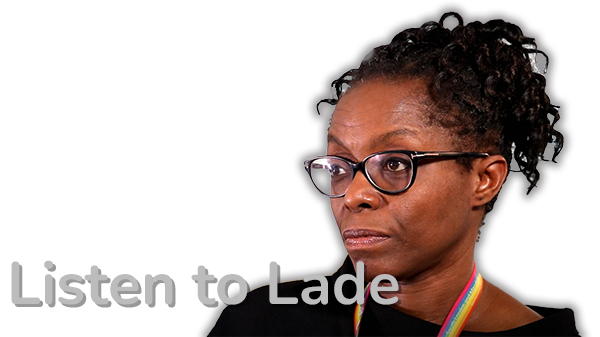MODULE 6: AUTISM

Advance choices apply equally to patients with a diagnosis of autism.It is important to understand the differences in approach that is needed to enable a patient with autism to fully understand the information and be involved in their care planning.
In the following series of videos we see a clinician meeting individually with two patients with autism who have different communication needs .We also see a session where a carer meets independently with the clinician to understand how they can support the person they care for.
CLINICIAN MEETING RONAN
In this video we see a clinical exercise and wellbeing lead speaking with Ronan who has a diagnosis of autism.
Diagnosed with Autism Spectrum Disorder,Ronan has his own flat, but has been admitted to the ward as an informal patient due to poor personal care and an increase in Obsessive Compulsive Disorder (OCD) rituals which has caused him to miss work and appointments. Ronan has spent all his time in his property which has become difficult to enter or leave due to a build-up of things Ronan is hording, including rubbish.
Ronan is meeting with the clinical exercise instructor to develop his exercise plan.
Key points:
- Scott asks Ronan how he demonstrates distress so that the clinical team are aware and can identify his distress
- Ronan is asked what can help to alleviate his distress – music, deep breathing
- Covers how an advance choice document can support Ronan when he is feeling distressed
- Clarifies for clinicians what works for Ronan rather than the clinical team making assumptions about what would work for him
- Note how Ronan asks for the meeting to stop as he has found it difficult. Scott agrees to arrange a further meeting
FOLLOW-UP MEETING WITH RONAN
Scott and Ronan meet a week later to discuss the advance choices further - Scott notices that Ronan is looking a little better at this meeting and Ronan explains some reasons for this.
Ronan is able to share what things are important to him, e.g. staff to knock on his door and not surprise him as he does not appreciate this.
Scott is demonstrating good practice in really finding out what helps Ronan and what he dislikes.
Scott continues to check in with Ronan and explain what he is doing e.g. writing things down.
Ronan makes it clear he does not always respond when spoken to although he is listening. He can be quiet and it is important for staff to be aware of this when working with him.
Scott asks Ronan how staff would be able to know what he wanted if he was not verballising something when distressed. Scott is taking great care to understand Ronan and what works and does not work for him.
Ronan is clear about the speed he wants to go with when developing this plan, and Scott is intuitive in how he works with him and keeps the pace at the level Ronan is comfortable with.
CLINICIAN MEETING WITH CARER (DANIELLE) TO DISCUSS HER SISTER (SCARLETT'S) CARE PLAN
The meeting with the Danielle (carer of Scarlett) is important to build a relationship with carers and patients. It allows Danielle the opportunity to ask pressing questions and for staff (Scott) to learn more about Scarlett and any possible additional support or skills to be used when engaging with her.
It is appropriate to engage with carers at any point unless stated otherwise formally by the patient. If staff can meet with carers prior to admission this can help, however this is not always possible and can be done after admission.
There could be a number of factors why a meeting with a carer may take place without the patient present, such as the carer feeling more comfortable to give honest feedback without the patient present, or the patient not feeling comfortable to attend such interactions.
The Advance Choice Document is there to show how to support someone in distress; you may not need to use this plan if the person does not become distressed, but it is better to be proactive rather than reactive to a situation. It is key that all people feel that they have a choice and are involved in their care.
There can be confusion amongst carers and others in relation to diagnosis, and we see this very often with learning disabilities and autism; it is important to be a aware these are both different diagnoses. Patient centred care will assist in knowing what works for an individual; what works for one person may not work for another.
SCOTT MEETS WITH SCARLETT AND DANIELLE
In this video we see the clinical exercise & wellbeing lead speaking with Scarlett who has a diagnosis of Autism Spectrum Disorder.
Scarlett has been on the ward for 2 weeks having been admitted under section 3 of the Mental Health Act. She has a background in sports, primarily running and loves music. Scarlett has been selectively mute for the past 4 years.
There is a history of aggression towards their mother, but there have been no incidents of this towards staff. Scarlett’s warning signs when she feels distressed are that she will clench her fist and stand/sit up straight; this is done in a quick manner. Tools that work with Scarlett are writing a response to questions and for staff to give a count down from 3 to 1 and for Scarlett to either respond with a thumb up or down or write her question/response on the paper.
The interactions seen in this video could be used by any member of the team when engaging with Scarlett. This is a basis for Scarlett to interact with staff no matter which team they represent.
The National Autistic Society have a number of resources which can assist in supporting your patient.
View/Download Health Passport
View/Download "I am Autistic" card
All these resources can be printed out from their website and used practically as seen in the video.

